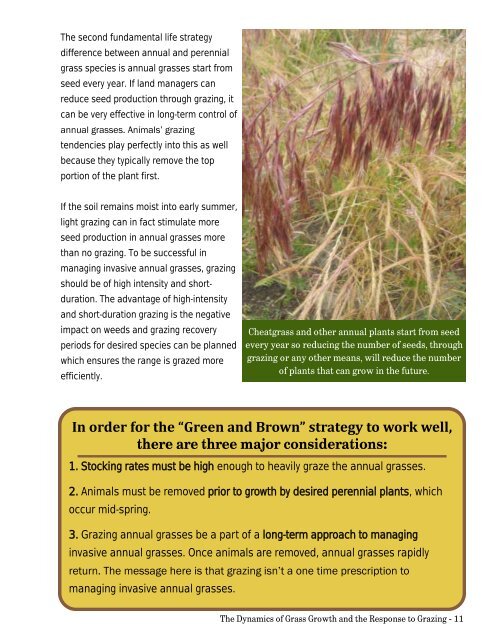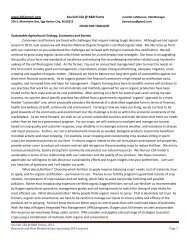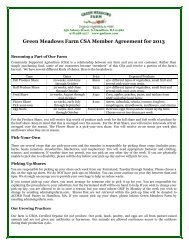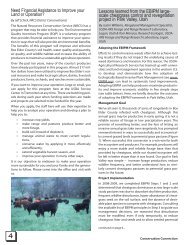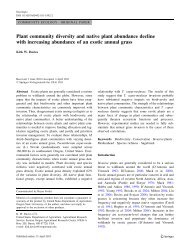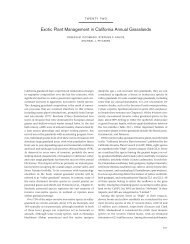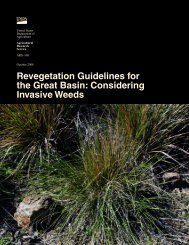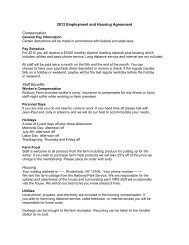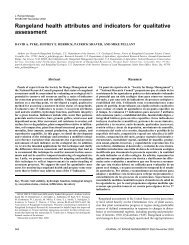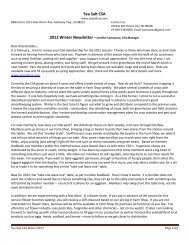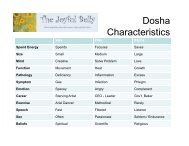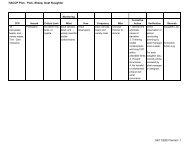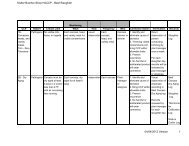“Green and Brown” Grazing Strategy
“Green and Brown” Grazing Strategy
“Green and Brown” Grazing Strategy
Create successful ePaper yourself
Turn your PDF publications into a flip-book with our unique Google optimized e-Paper software.
The second fundamental life strategy<br />
difference between annual <strong>and</strong> perennial<br />
grass species is annual grasses start from<br />
seed every year. If l<strong>and</strong> managers can<br />
reduce seed production through grazing, it<br />
can be very effective in long-term control of<br />
annual grasses. Animals’ grazing<br />
tendencies play perfectly into this as well<br />
because they typically remove the top<br />
portion of the plant first.<br />
If the soil remains moist into early summer,<br />
light grazing can in fact stimulate more<br />
seed production in annual grasses more<br />
than no grazing. To be successful in<br />
managing invasive annual grasses, grazing<br />
should be of high intensity <strong>and</strong> shortduration.<br />
The advantage of high-intensity<br />
<strong>and</strong> short-duration grazing is the negative<br />
impact on weeds <strong>and</strong> grazing recovery<br />
periods for desired species can be planned<br />
which ensures the range is grazed more<br />
efficiently.<br />
Cheatgrass <strong>and</strong> other annual plants start from seed<br />
every year so reducing the number of seeds, through<br />
grazing or any other means, will reduce the number<br />
of plants that can grow in the future.<br />
In order for the <strong>“Green</strong> <strong>and</strong> <strong>Brown”</strong> strategy to work well,<br />
there are three major considerations:<br />
1. Stocking rates must be high enough to heavily graze the annual grasses.<br />
2. Animals must be removed prior to growth by desired perennial plants, which<br />
occur mid-spring.<br />
3. <strong>Grazing</strong> annual grasses be a part of a long-term approach to managing<br />
invasive annual grasses. Once animals are removed, annual grasses rapidly<br />
return. The message here is that grazing isn’t a one time prescription to<br />
managing invasive annual grasses.<br />
The Dynamics of Grass Growth <strong>and</strong> the Response to <strong>Grazing</strong> - 11


